Special Report
The Most Expensive Materials on Earth
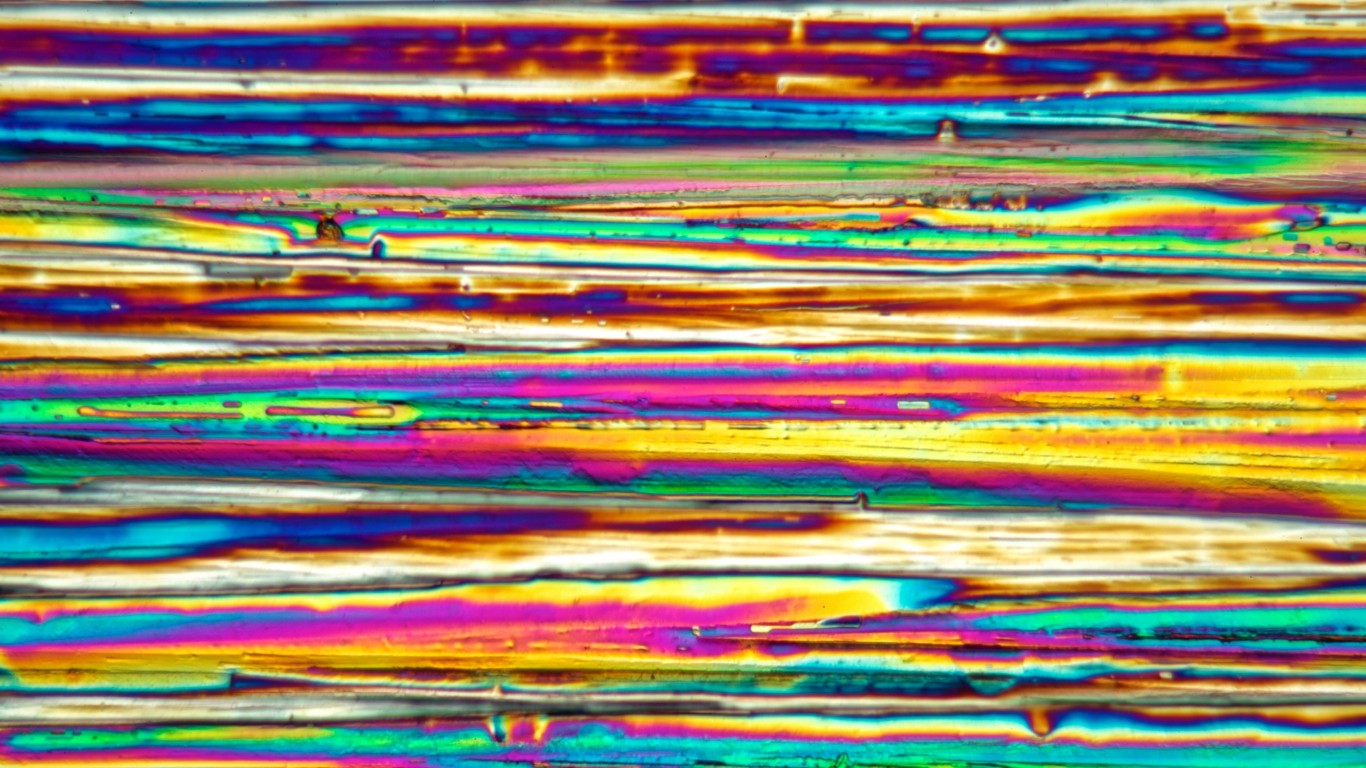

On a daily basis, we interact with hundreds or thousands of materials that range in complexity from the water we drink to the OLED screens on our smartphones. The development of new materials can be linked to nearly every major advance in human history, and breakthroughs made by material scientists have profoundly affected our society and daily lives — from transportation to how we receive information.
Some of the most expensive materials on this list are naturally occurring, while others, such as two-dimensional materials, have been developed in laboratories and are on the cutting edge of scientific progress.
Human epochs are defined by the materials that enabled advancement, “First the Stone Age, then bronze, then iron, then steel, then plastics, and now we’re firmly in the semiconductor age,” said Alex Kozen, an assistant research scientist at the University of Maryland, College Park. “I expect the next great advance in materials to be biological materials,” where genetic engineering could be used to create organisms that provide better nutrition, grow structural materials and much more.
The following is a list of some of the most expensive materials used today in manufacturing, tech products, research, and other applications. They include precious metals, compounds, rare earth elements, and ultra-thin two-dimensional materials.
Click here to see the most expensive materials on Earth
The cost of different materials is determined by several factors, including supply and demand, mining costs, raw materials costs, how rare or abundant a material is, purity of the material, engineering costs — whether it is a complex material to produce — among many other factors. The materials on this list are not meant to represent a complete list of every expensive material. The materials on our list were selected in part because they are used commonly in industry and research.
To compile our list, we used various scientific journals, the Defense Logistics Agency’s list of Strategic Materials, the USGS’s Mineral Commodities Summary 2019, and prices were estimated from various suppliers’ websites.
1. Diamond
Carbon forms the basis for all organic materials and is abundant on Earth. However, its value varies a great deal depending on its purity, composition, and atomic structure. For instance, a bag of charcoal (graphitic carbon) is relatively inexpensive. Charcoal — the kind used in grilling — costs less than a cent per gram (about 0.04 ounces).
The price of high purity diamond, on the other hand, is orders of magnitude higher, thanks in part to diamonds’ value in the retail jewelry market. For instance, research-grade diamond powder, with diamond particles 1 micrometer in diameter — about 1/20th the size of a human hair — costs about $120 per gram. Increasing the size of a single crystal of diamond to 1 g, or 5 carats, would dramatically increase the price, to well above $10,000.
[in-text-ad]
2. High-purity aluminum
Aluminum has extremely high electrical and thermal conductivity, meaning it conducts heat and electricity very well, making it great for certain electronics applications.
Most commercially-available aluminum is quite inexpensive given that it is one of the most abundant materials on the planet, constituting 8% of the Earth’s crust. A roll of aluminum foil costs a few dollars at the supermarket. However, when extremely pure aluminum is needed, for example for certain research studies, the manufacturing cost increases the prices significantly. A 4″ x 4″ piece of ultra-pure aluminum foil can cost a few hundred dollars.
3. Electronics-grade silicon
This material is also extremely abundant, and most commercially available silicon is generally inexpensive. Silicon comprises about 25% of the Earth’s crust, making it relatively easy to find and mine.
Silicon is an essential component of most electronic devices — computer chips and solar panels are primarily made from silicon. Electronics-grade silicon, however, requires a certain purity and crystallinity (the way in which the atoms in the material are arranged), which add considerable engineering costs to the raw materials. Once a silicon wafer with the diameter of a large dinner plate and thickness of less than 1mm (about 1/32nd of an inch) has been fully processed into an array of state-of-the-art computer chips, it can be worth more than $10,000.
4. Silver
In the United States, $440 million worth of silver was extracted from mines, totaling about 900 tons. Most silver is used in electronics, jewelry, or for photographic equipment. For example, 20 grams (about 0.7 of an ounce) of ultra-pure silver used for research purposes costs about $250.
Silver serves a variety of applications owing to its unique properties. It is the most electrically conductive of any element, even beating out copper. However, the high cost makes it economically unfeasible to wire our cities and houses. Silver can also be found in some optical coatings (such as high-end mirrors), silver-oxide batteries, soldering, and more.
[in-text-ad-2]

5. Rhenium
Rhenium is a metal with extraordinary properties. It is one of the rarest materials on Earth, and it has the third highest melting temperature of all known materials. As such, it is a critical component in alloys used in jet engines and in some temperature sensors given its ability to withstand high temperatures.
Rhenium exists in Earth’s crust in tiny quantities. In other words, we have to extract approximately 1 billion times more material from the Earth than we get in rhenium, once refined. Just 5 grams (about 1/6th of an ounce) of 99.995% Rhenium powder costs almost $400.
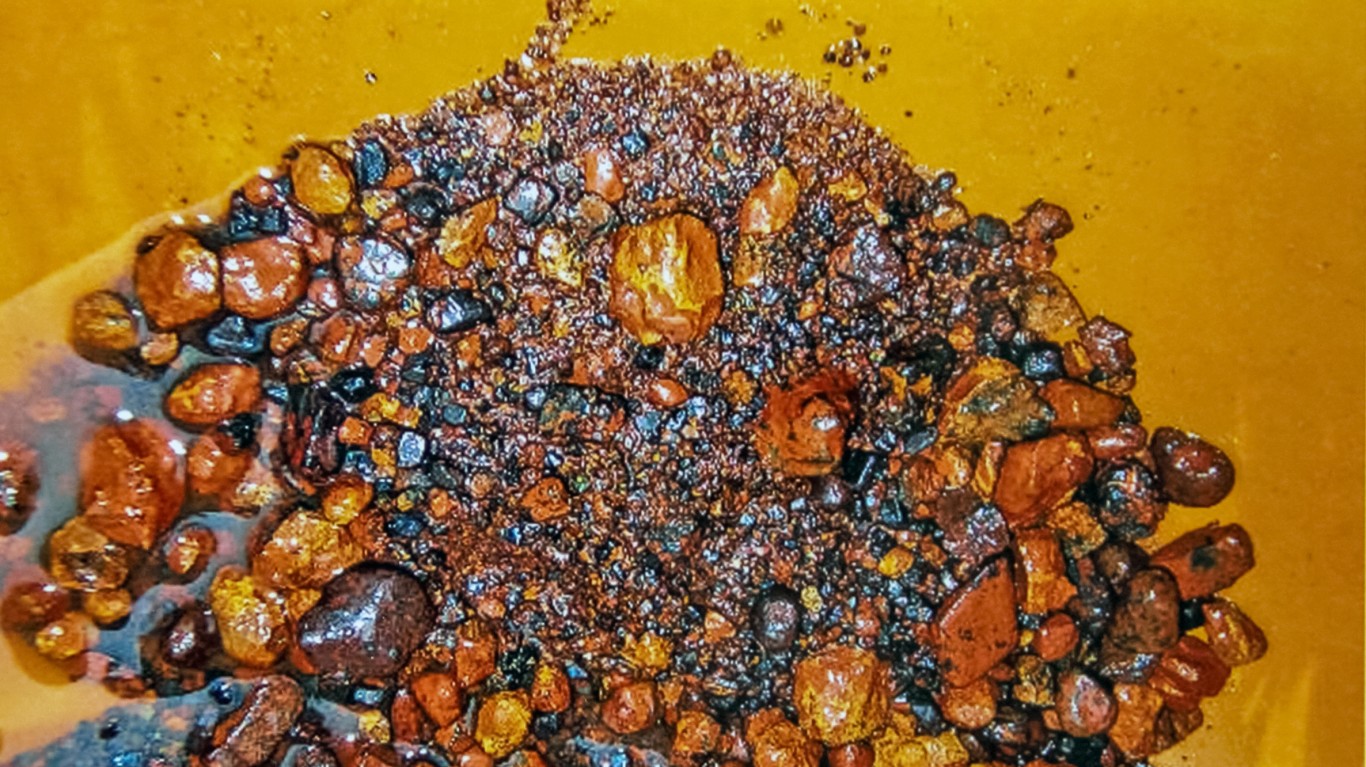
6. Tantalum
Tantalum is a soft metal that has high electrical conductivity and an extremely high melting temperature. It is used in a variety of electronic devices in everything from cars to personal computers, primarily in the form of tantalum-based capacitors — components of circuits that store energy between opposing metal plates.
Tantalum can also be combined with carbon to form a hard tantalum carbide, which has applications as tooling for metalworking equipment and as a component in jet engines. A 1/4″ diameter rod of 99.9% Ta with a mass of 125 grams costs around $700.
[in-text-ad]
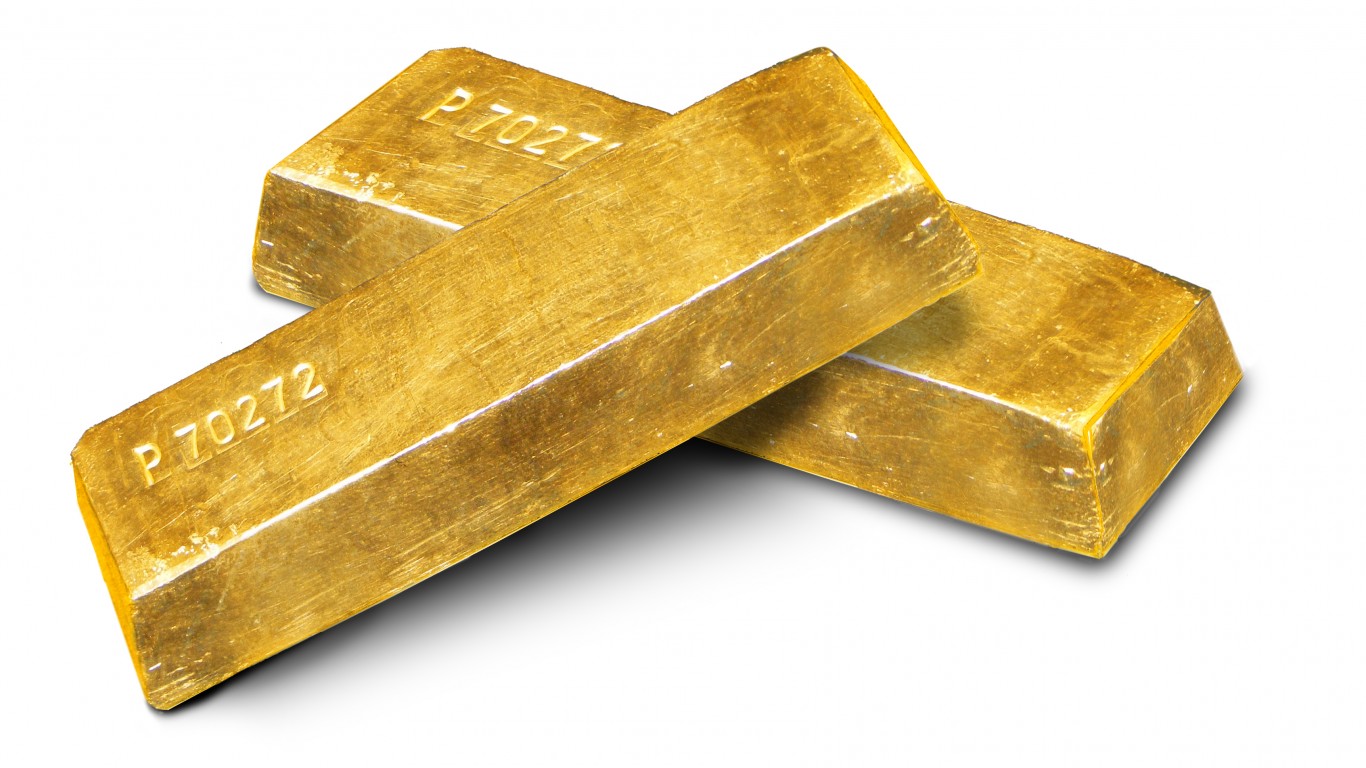
7. Gold
In 2018, $8.6 billion worth of gold was extracted from mines in the United States, equal to roughly one-third of the total value of metals extracted from U.S. mines that year. Somewhat surprisingly, jewelry accounts for only about 46% of gold processed in the United States, with electronics applications another 40%, and coins making up most of the rest. A chunk of 6.4 grams (0.22 ounces) of nearly-pure gold can be purchased for a little over $1,000, or approximately $150 per gram.

8. Strontium
Strontium occurs in mineral deposits throughout the United States, though it hasn’t been mined here since the 1950s. The United States imported nearly 28,000 metric tons of strontium in 2018, primarily from Mexico and Germany. Strontium has applications spanning many industries, from an additive in drilling fluids to pyrotechnics. When combined with titanium and oxygen, strontium titanate has interesting and useful properties in various electronic or magnetic applications.
The mineral strontium is extracted from celestite, which costs about $75 per ton. However, 25 grams of ultra-pure strontium cost over $2,000.
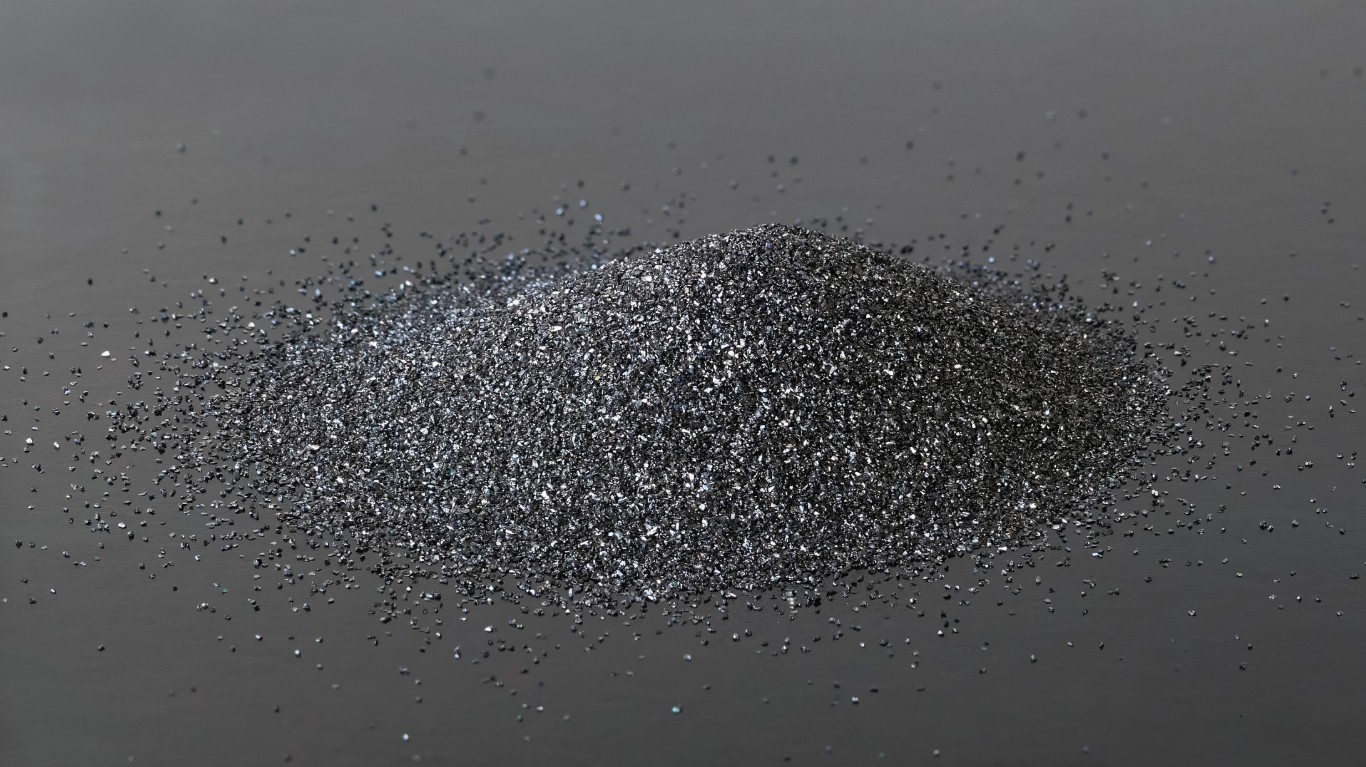
9. Silicon carbide
Silicon carbide, which is a material made of silicon and carbon, can have a variety of different crystal structures, with each structure having its own unique properties. Although the materials that make it up (namely, silicon and carbon) are relatively inexpensive, the costs of making certain kinds of crystalline SiC increases the price significantly. For electronics-grade material, a small salad plate sized-wafer of SiC can cost over $1,000.
Silicon carbide is extremely hard, and one of the structures it can adopt has nearly the same hardness and optical properties as diamonds. In another structure, it has uses in electronic materials and forms the backbone of many consumer LED light bulbs.
[in-text-ad-2]
10. Platinum-group metals
The platinum-group metals include platinum, palladium, iridium, osmium, rhodium, and ruthenium. These very rare metals are often grouped because they are typically found together in nature, and because they share similar properties. Palladium is used in catalytic converters in cars, and osmium is used in fountain-tip pens and electrical contacts.
Other uses for platinum-group metals include catalysts for industrial processes, medical devices, electronic applications, jewelry, and laboratory equipment. Prices of the materials vary but are usually quite expensive. For example, 6.5 grams (about 0.23 of an ounce) of platinum can cost about $1,000.
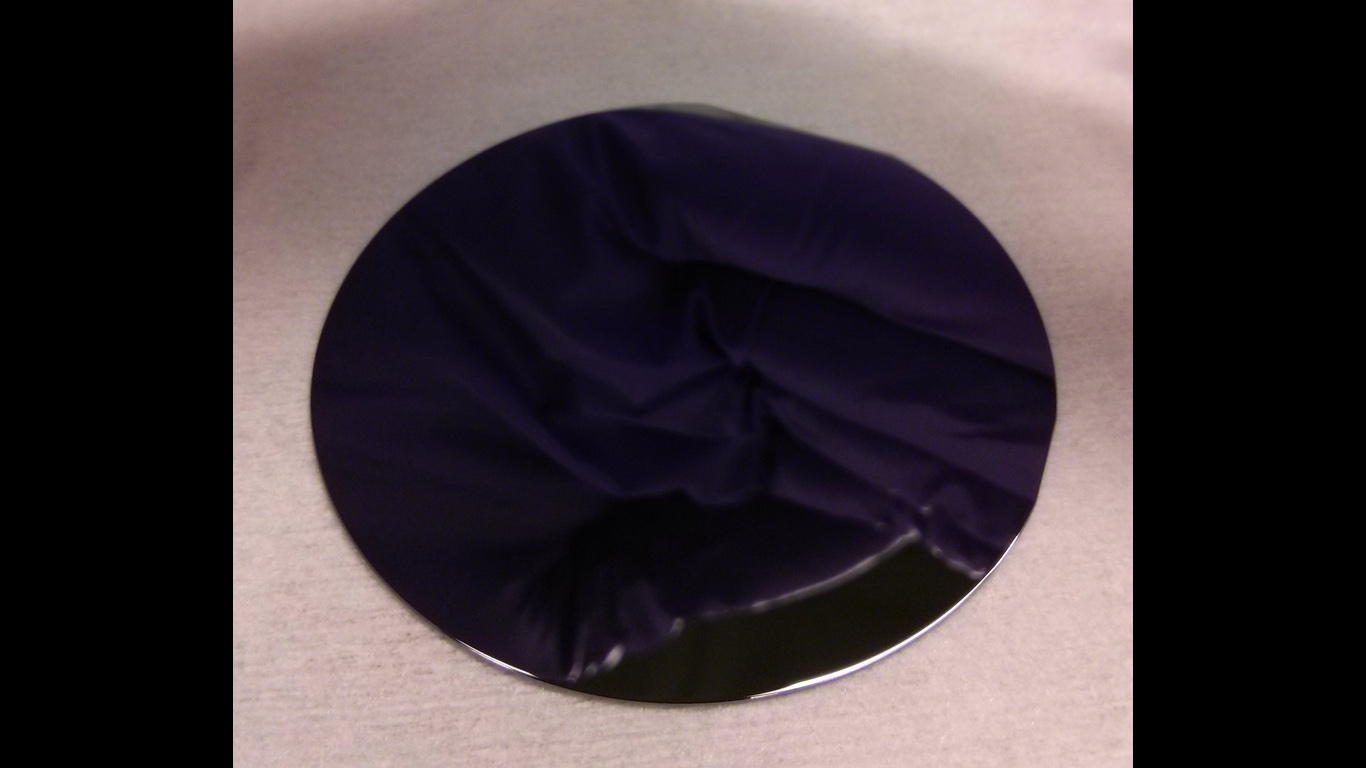
11. Gallium arsenide
Gallium arsenide is a compound composed of gallium and arsenic. Almost all of the gallium used in the United States is used to make gallium arsenide, a semiconductor material of critical importance in many everyday electronics such as cell phones or other wireless communications devices.
Because nearly all gallium arsenide is used in electronics applications, the purity and crystallinity requirements are among the most extreme of the materials on this list. To produce electronics-grade GaAs a special VGF (vertical gradient freeze) technique is used. The material is then sold as wafers. A 4″-diameter wafer that has the same thickness as a few sheets of paper costs around $250.
[in-text-ad]
12. Graphene
Graphene is a layer of graphitic carbon (that is, carbon that has atomic bonds more like charcoal than diamond) that is 1-atom thick. It was the first two-dimensional material discovered, and the scientists who isolated it were awarded a Nobel Prize in Physics in 2010. Graphene has interesting optical, mechanical, and electrical properties, and products developed with graphene — such as motorcycle helmets, inks, cycling tires, detectors, and headphones — are now commercially available.
A 4″ x 4″ film of graphene grown via chemical vapor deposition — a technique used to grow graphene and many other materials — costs about $400.
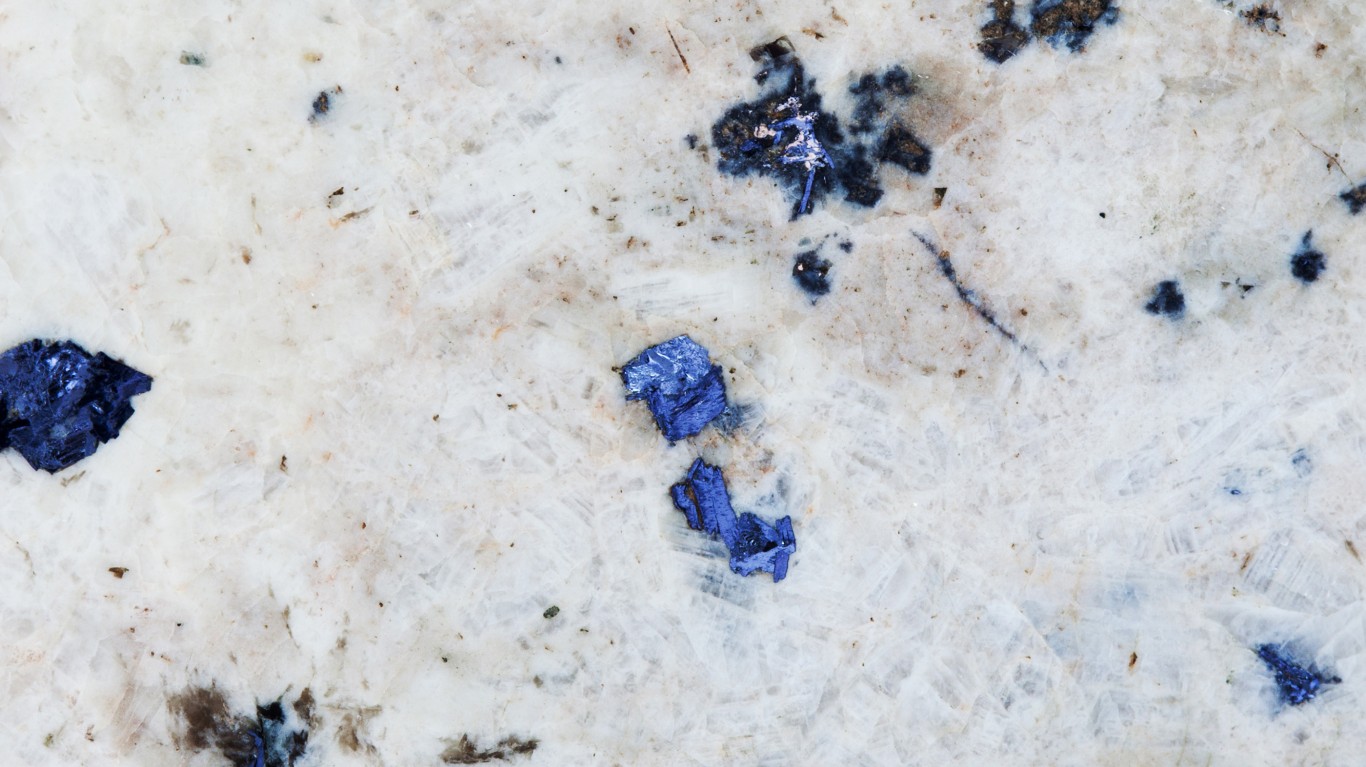
13. Molybdenum disulfide
Molybdenum disulfide has been used in high temperature lubricants for many decades. It was recently discovered to exist in a stable two-dimensional form, with one “layer” consisting of a layer of molybdenum atoms sandwiched between two atomic layers of sulfur. An atomic layer of molybdenum disulfide is a promising material for many electronic and optical applications, though it is not yet widely commercially available.
The material can be grown successfully by a variety of academic research groups and companies, and some tiny MoS2 crystals are sold for hundreds of dollars each.

14. Hexagonal boron nitride
Many two-dimensional materials (2DMs) have interesting properties and significant potential on their own, but one of the most promising (and relatively recent) applications of these materials involves “stacking-up” different 2DMs to make new structures with their own unique electronic applications.
Hexagonal boron nitride is one material that will be key to developing these structures, as it is an excellent insulator. Some recent reports have also found hexagonal boron nitride to have some uses as a material for quantum computing. A small 2″ x 1″ piece of copper foil with an atomic layer of hexagonal boron nitride sells for around $300.
[in-text-ad-2]

15. Terbium
Terbium typically comes in the form of terbium oxide, which has an average import cost of $461 per kg. A 1″ x 1″ sheet of 1 mm-thick terbium foil can cost almost $500. Terbium is an essential component in some commercially available LED lighting fixtures. It has additional applications in high-strength permanent magnets and lasers.
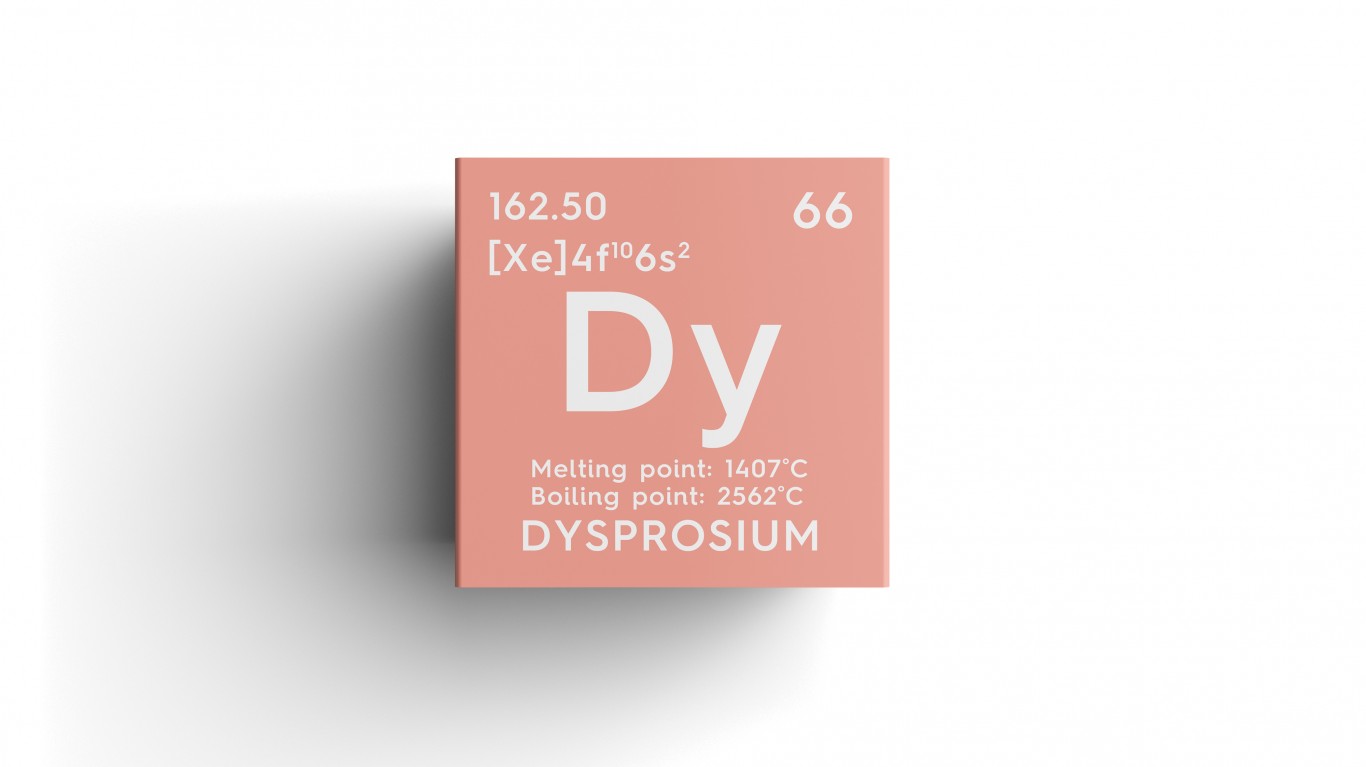
16. Dysprosium
Dysprosium is also imported as an oxide and has an average import cost of $180 per kg. Buying 5 grams (about 1/6th of an ounce) of Dy flakes cost nearly $100. Applications for Dy include permanent magnets, lighting, electronics, and lasers.
Credit card companies are handing out rewards and benefits to win the best customers. A good cash back card can be worth thousands of dollars a year in free money, not to mention other perks like travel, insurance, and access to fancy lounges. See our top picks for the best credit cards today. You won’t want to miss some of these offers.
Flywheel Publishing has partnered with CardRatings for our coverage of credit card products. Flywheel Publishing and CardRatings may receive a commission from card issuers.
Thank you for reading! Have some feedback for us?
Contact the 24/7 Wall St. editorial team.